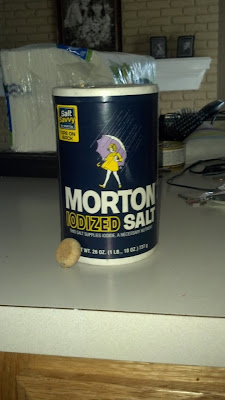We rescued these kittens a few days ago from outside.(They're only 3/4 of a pound each. Cutest things ever, I know.) Cats are examples of K-Strategists; K-strategists reproduce to where the mother has fewer babies that require more care and attention over a long period of time. Fewer babies also allows the mother to provide maximum care to ensure that more will survive. The offspring have a longer life expectancy and larger body sizes.
(Our mother was not an example of a good mother, however, the theory of K-selection is shown in the sense that she had few babies.)


On the other hand, the hundreds of any larvae shown in the pictures above show the results of an r-stragetist; where reproduction is quick with many offspring. r-strategists belong to the r-selection theory, whose organisms have characteristics such as a small body size, short generation time, and a short time until they reach maturity.
The cookie is in multiple pieces in the pictures of the ants... they attacked it when I went to put it in the picture. (Oops) Click on the pictures of the any colony to truly see just how many eggs there are. It's gross.


























